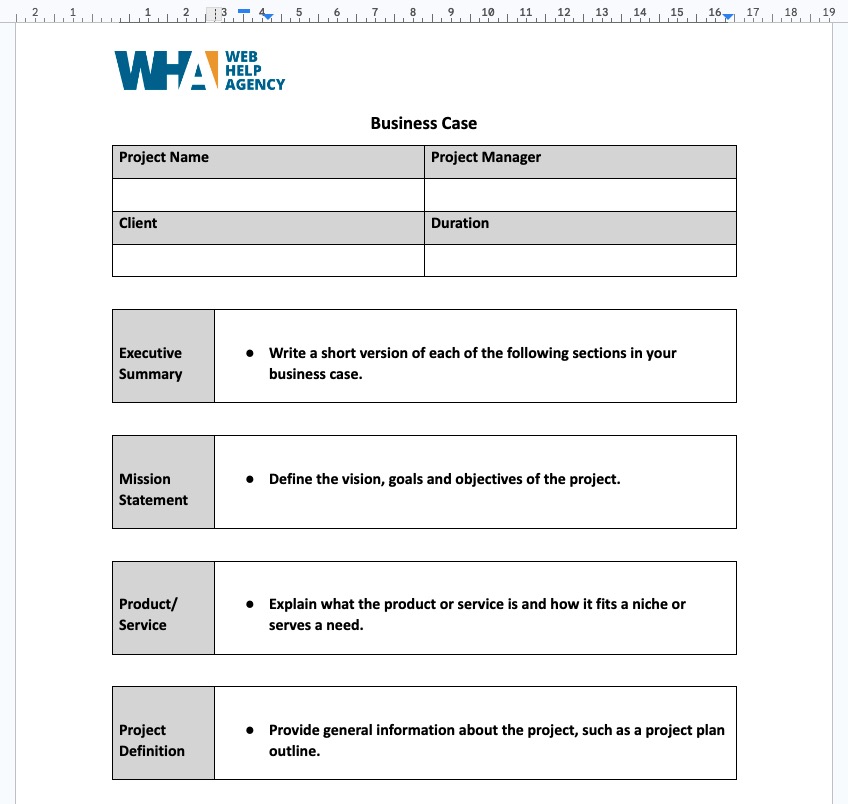In essence, a business case entails a document that aids in justifying the decision to begin or even carry on a given project. When properly documented, it allows the management to see all the advantages and disadvantages of any planned operation and make a well-informed decision regarding its future. For instance, you can use it when you decide to start an online business. A business case highlights the need or lack thereof for a particular initiative; provides details of the expected timetable; and details its costs, advantages, and threats; among many other things.
6 Aspects of a Helpful Business Case
The following six aspects characterize an excellent business case. Utilize them when writing down your next document to simplify the process. Read on to learn more about these elements:
- Executive Summary
As the name suggests, this section represents the document’s summary. When presenting it to C-suite executives, they would most likely not go through the whole thing due to their busy schedule. As such, this section should briefly tell the audience the kind of initiative you are proposing, the cost, the type of personnel needed, and the advantages.
- Project Definition
It helps to give more details about the project, the objectives you hope to accomplish upon its completion, and its importance. The segment must also touch on the benefits that your business stands to reap, other possible solutions you might have considered before settling on the current idea, and a basic breakdown of the whole process.
- Marketing and Market
Projects involving the creation of new services and products call for an in-depth business case comprising an assessment of the existing market. For example, it should focus on competition and customer interest, among other aspects. Also, talk about how you plan to market the new offering. Talk about the new service or product’s validity and demonstrate its impact on the market.
- Risk Assessment & Strengths
SWOT analysis is also crucial. It helps to show the company’s strong points, weak areas or vulnerabilities, new/emerging growth opportunities that need exploring, and aspects that threaten your organization’s growth. This section not only helps in strengthening your position but also assists the senior management in seeing the value of your project.
- Timeline
Utilize this part to give the entire undertaking a time frame. When can the completion of each stage be expected? Additionally, how will the project’s progress be reported, who will make the decisions and how, and who will be recruited to help complete the initiative? All this information should be included here.
- Financials
Lastly, ensure that you address the financial aspect of the entire operation. You must show that your proposed initiative is practical and the forecasted benefits will be reasonable compensation for the expenses amassed.
Follow the Following 4 Steps to Learn How to Create a Business Case
1: Do Your Research
First things first, conducting research is important. After identifying an opportunity or issue, you should study its background. If you want to develop a new product, you must look for the potential target audience and check whether there’s room for something new. Check whether there’s a gap that your project can fill. Doing so allows you to satisfy customer needs, especially after your new commodity hits the market. Ensure you include other parties to make the entire process successful and enjoyable.
2: Make a List of all the Alternatives and Options
In this case, ensure that you create a list of all the potential measures that can help address the identified problem. Bear in mind that each project requires you to follow a unique process. Once you have listed all the possible solutions, run them through a cost-and-benefit analysis. Doing so will assist you in identifying the feasible options and eliminating the rest.
3: Make a Decision about the Project’s Progress
The next phase involves deciding the way forward for your project. Although you might have a good idea, you require a plan to execute it or make the next step. If you are hoping to come up with a new product, then you need to create a list of all the steps necessary to move from an idea to the final product. Explore all the possible challenges you may encounter and the best way to overcome them. Also, consider the financials.
4: Begin Writing
Finally, you can start writing your business case. Begin with the first element (executive summary) followed by the other aspects shown above. Doing so will help you to present your idea rationally.
Check out the following tips to assist you in coming up with a more compelling business case:
- Use the Appropriate Tone
Your audience (those you expect to give your project the green light) determines the tone you use to communicate your idea. However, avoid using slang and stick to an expert or formal tone. Furthermore, document your thoughts in a simple-to-read manner.
- Utilize Numbers
Numbers are more compelling than words. The senior management will be more captivated by numbers since they demonstrate your knowledge in what you’re talking about.
- Be Brief
Bear in mind the upper management has a lot of other things to do. Therefore, keep your details brief, but don’t mention anything crucial. Use the mentioned template to assist you in including the necessary points.
- Keep the Design in Mind
Consider the layout. Although you don’t require hiring a professional designer, ensure that the document is simple to read and professionally written. The idea is to deliver presentable work to your target audience.
- Proofread
Get rid of grammatical and spelling mistakes to achieve a professional document. Request another person to go through all the work. In the process, they might spot a few errors.

It’s a Wrap!
If you follow the information above, especially our four steps, you can rest assured that your project proposal will get the much-needed green light. In case you have more tips that we may have missed, feel free to comment below.

